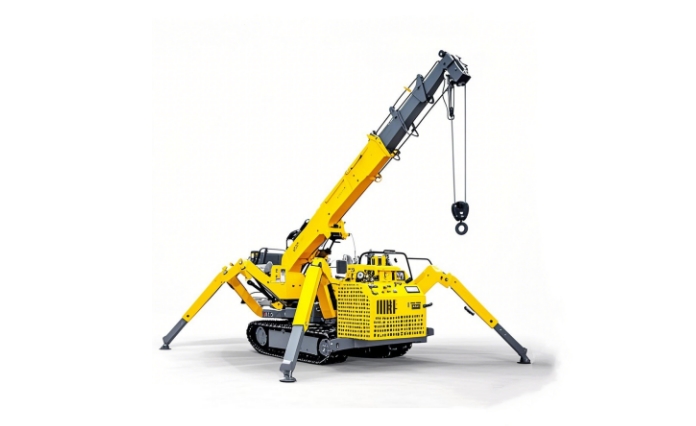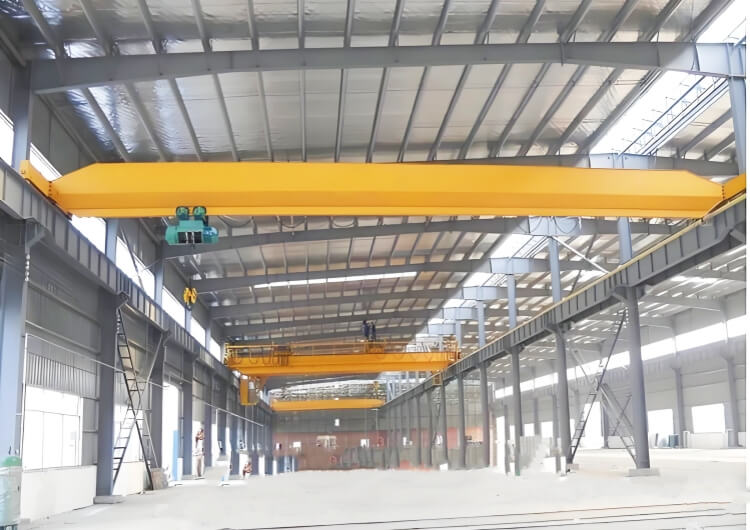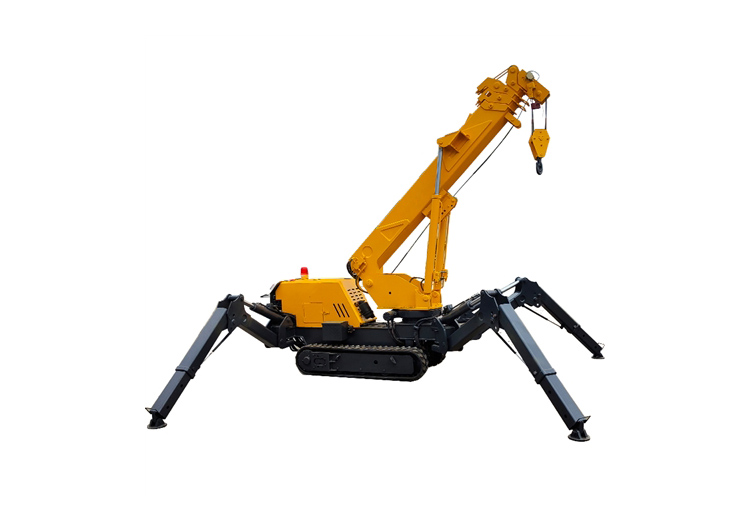Spider Cranes: Compact Lifting Revolution
In the ever-evolving landscape of modern construction and specialized lifting, a unique piece of machinery has steadily gained prominence for its remarkable capabilities: the spider crane. Often referred to as a mini crane, this innovative equipment is engineered to tackle lifting challenges in environments where traditional cranes simply cannot operate. The core advantage of a spider crane lies in its unparalleled access to confined spaces, a feat made possible by its ingenious compact design. This ability to navigate through narrow doorways, operate on sensitive flooring, and set up in tight corners has made it an indispensable tool across a multitude of sectors, most notably within the demanding construction industry but also extending to specialized fields requiring precision and minimal disruption. This article will delve into the defining features of spider cranes, explore their significant benefits, showcase their diverse applications, and offer a glimpse into their promising future, highlighting why they are increasingly considered a revolutionary solution for complex lifting tasks.

Unpacking the Design: Key Features of Spider Cranes
The remarkable versatility and effectiveness of spider cranes stem from a collection of meticulously engineered features designed to overcome the limitations of conventional lifting equipment. At the forefront is their exceptionally compact design and lightweight construction. This allows them to be easily transported, even in goods elevators, and to operate on surfaces with load restrictions, such as suspended floors or delicate landscapes, making them ideal for indoor operations and access to highly restricted zones. Complementing this compactness are their versatile outriggers, often likened to spider legs, which give these cranes their distinctive name. These independently adjustable legs can be configured in numerous positions, enabling the crane to achieve a stable setup on uneven terrain, slopes, or in extremely tight spots where other cranes cannot find a secure footing. Despite their modest size, spider cranes boast surprising lifting power, capable of handling significant loads with precision. This high capacity-to-weight ratio is a critical aspect of their utility. Superior maneuverability is another hallmark, often achieved through tracked undercarriages that allow for movement over rough ground and 360-degree continuous slew for precise load placement without needing to reposition the entire machine. Recognizing diverse operational needs, manufacturers offer various power source options. These typically include diesel engines for outdoor applications, electric motors for indoor or emission-sensitive environments – prominently highlighting their potential for energy efficiency – and increasingly, hybrid models that offer the flexibility of both. Furthermore, the evolution of spider cranes has seen the integration of advanced control systems. Remote control operation is a standard feature for many models, enhancing operator safety by allowing them to position themselves for optimal visibility and away from potential hazards. Looking ahead, the industry is also witnessing the emergence of even more sophisticated interfaces, with some newer models beginning to incorporate AI-powered controls aimed at further improving precision, automating certain functions, and simplifying complex lifting tasks.

The Spider Crane Advantage: Why They Stand Out
The growing preference for spider cranes in a variety of demanding applications is not accidental; it is a direct result of the distinct advantages they offer over traditional lifting solutions. Their most celebrated benefit is unparalleled access. Spider cranes are specifically engineered to navigate through narrow passages, standard doorways, and even freight elevators, allowing them to reach work areas that are simply inaccessible to larger cranes, such as rooftops, basements, courtyards, and deep within existing structures. This ability to operate in confined spaces is a game-changer for many projects. Beyond mere access, these machines exhibit multi-functional versatility. They are not limited to a single type of task; instead, they prove highly effective for a wide range of applications, from general material handling and steel erection to highly specialized tasks such as serving as precise glazing tools for the installation of large, delicate glass panels. This adaptability significantly boosts operational efficiency. The rapid deployment capabilities of spider cranes, coupled with their ability to reduce the need for extensive manual labor, contribute to accelerated project timelines and overall productivity gains. Safety on site is another critical advantage. The common inclusion of remote control operation allows operators to maneuver the crane and its load from a safe distance, affording them a better vantage point and keeping them clear of the immediate lifting zone. Furthermore, the stable setup provided by their adjustable outriggers minimizes the risk of accidents even on challenging terrains. From a financial perspective, spider cranes can also be remarkably cost-effective. Their smaller size and lower weight translate into reduced transportation costs and minimal site preparation requirements. In many scenarios, they can eliminate the need to hire larger, more expensive cranes, leading to significant savings. The availability of electric models also underscores their commitment to energy efficiency and environmental responsibility, offering quieter operation and zero emissions, which is crucial for indoor work or in environmentally sensitive areas. This combination of accessibility, versatility, efficiency, safety, and cost-effectiveness makes the spider crane a truly standout solution in the modern lifting landscape.
Spider Cranes in Action: Applications Across Industries
The unique attributes of spider cranes have led to their adoption across a remarkably diverse range of industries and applications, far beyond what one might initially expect from such a compact design. Within the construction industry, they are invaluable for tasks such as steel erection in tight spaces, facade work on high-rise buildings where ground access is limited, intricate interior fittings, and complex renovation projects within existing structures. Their precision and ability to navigate through partially completed buildings make them ideal for these demanding environments. A particularly prominent application is in glazing and facade installation, where spider cranes excel as highly effective glazing tools. They can lift and maneuver large, heavy, and often delicate glass panels with exceptional accuracy, facilitating installations on curtain walls, skylights, and atriums, often in areas inaccessible to traditional cranes. Industrial and manufacturing settings also frequently leverage spider cranes for machinery installation, plant maintenance during shutdowns, and the relocation of heavy equipment within operational facilities where space is at a premium. Their ability to operate indoors without significant disruption is a key benefit here. Even in fields like landscaping and arboriculture, spider cranes find their niche, assisting in the safe removal of large trees in confined residential areas or the precise placement of heavy decorative elements like statues or large rocks. Furthermore, their capabilities extend to highly specialized lifts, including the installation of valuable art pieces in museums or public spaces, the careful handling of historical monuments during restoration, and various tasks in sensitive historical sites where minimal ground pressure and precise control are paramount. Finally, spider cranes are the go-to solution for challenging access projects, such as operations within tunnels, basements, underground facilities, and any location with severely restricted entry points, demonstrating their adaptability to almost any environment where lifting is required in confined spaces.
Selecting the Ideal Spider Crane: Factors to Consider
Choosing the right spider crane for a specific project or ongoing operational need is crucial to maximizing its benefits and ensuring safe, efficient lifting. Given the variety of models available, each with different specifications and capabilities, a careful assessment of requirements is essential. Key criteria to evaluate include the maximum lifting capacity needed – it’s important to select a crane that can comfortably handle the heaviest anticipated loads with an appropriate safety margin. Equally important is the maximum lifting height and outreach required to access the work area effectively. The overall dimensions and weight of the mini crane itself are critical, especially when dealing with confined spaces, narrow access routes, or load-restricted surfaces. The suitability of the power source is another major consideration; electric models are ideal for indoor use or noise-sensitive areas due to their zero emissions and quiet operation, promoting energy efficiency, while diesel or hybrid options might be better for outdoor sites with no readily available power. Site-specific conditions, such as ground evenness, accessibility for delivery and setup, and any environmental restrictions, must also be thoroughly reviewed. Because of the nuanced interplay of these factors, it is highly recommended that potential buyers or renters consult with experienced spider crane suppliers or specialized lifting consultants. These experts can help analyze the specific project demands, recommend the most suitable model, and provide insights into operational best practices, ensuring that the chosen spider crane perfectly aligns with the task at hand and delivers optimal performance and safety.
The Evolving Landscape: Future Trends for Spider Cranes
The field of spider crane technology is dynamic, with ongoing advancements continually enhancing their capabilities and expanding their potential applications. A significant area of development lies in technological integration, particularly with the increasing sophistication of AI-powered controls. These intelligent systems promise to further refine operational precision, automate complex lifting sequences, and provide operators with more intuitive interfaces and real-time performance feedback. Enhanced sensor technology is also playing a crucial role, improving safety features such as collision avoidance and load stability monitoring. Alongside smarter controls, there is a strong and growing focus on sustainability. Manufacturers are investing heavily in improving battery technology for electric models, aiming for longer operational times, faster charging, and even greater energy efficiency. This commitment to greener solutions is likely to drive further adoption in environmentally conscious markets and for indoor applications where emission control is paramount. The versatility of the mini crane concept is also leading to its expansion into new and emerging markets. As more industries recognize the unique benefits of these compact yet powerful machines for navigating confined spaces and performing delicate lifts, their application scope will undoubtedly broaden. The overall market trajectory for spider cranes indicates continued robust growth. The increasing complexity of construction projects, coupled with a greater emphasis on safety and efficiency in the construction industry and beyond, fuels the demand for these adaptable lifting solutions. We can expect to see spider cranes becoming even more integrated with digital workflows, offering better data logging, remote diagnostics, and fleet management capabilities, further solidifying their role as indispensable tools in modern lifting operations.
Conclusion: The Indispensable Role of Spider Cranes
In conclusion, spider cranes, also widely recognized as mini crane solutions, have firmly established themselves as indispensable assets in a multitude of industries, fundamentally changing how lifting operations are approached in challenging environments. Their core strengths – unparalleled versatility, an exceptionally compact design that grants access to the most confined spaces, and surprising lifting power – address a critical need for precision and adaptability where traditional cranes fall short. From bustling urban centers within the construction industry to delicate heritage sites and intricate industrial settings, these machines consistently prove their worth. The integration of advanced features like remote control operation enhances safety and efficiency, while the ongoing development towards greater energy efficiency and sophisticated AI-powered controls signals an even brighter future. As projects become more complex and site constraints more demanding, the unique capabilities of spider cranes will only become more valuable. They are not just a niche solution but a mainstream enabler of modern construction practices and specialized lifting operations, empowering businesses to tackle previously insurmountable challenges with confidence and precision. For any organization facing complex lifting tasks in restricted environments, exploring the potential of a spider crane is no longer just an option, but a strategic imperative. Discover how a spider crane can transform your next project. Contact us for a consultation or quote to learn more about how these innovative machines can elevate your operational capabilities.
All News
Recent Posts
2025/1/25
2025/2/7
2024/8/1
Contact Us Now
Have questions about our cranes or need help?
Reach out to our friendly team for expert support and guidance.
We are here to help you power your journey towards a greener future !
Tel: +8615738677559
E-mail: info@slkjcrane.com
Whatsapp: +8615738677559
Address: Crane Industry Park, Xinxiang City Henan Provice



